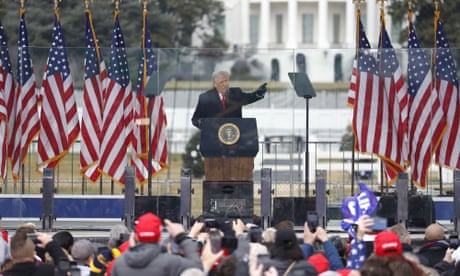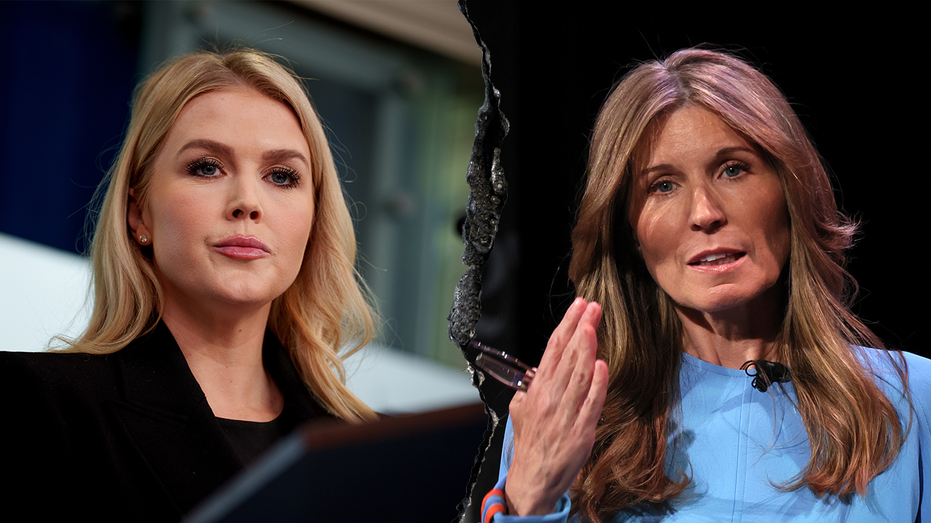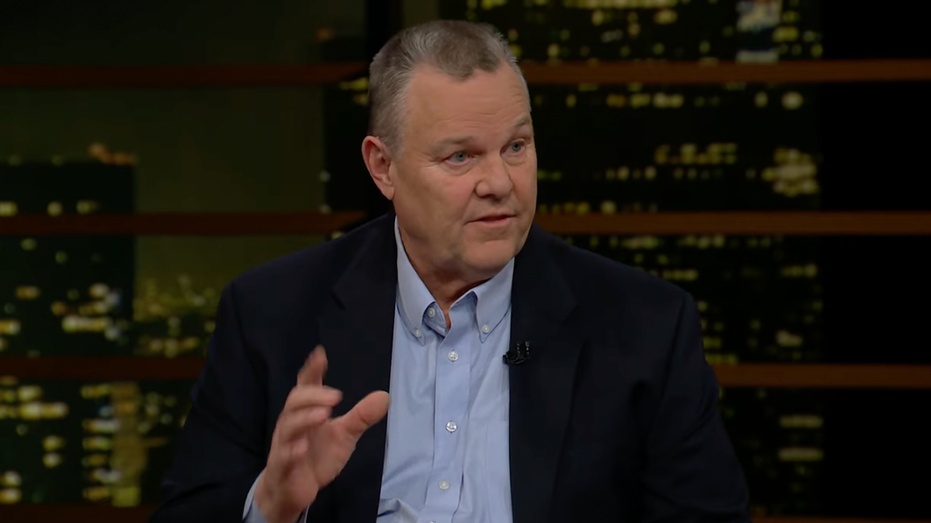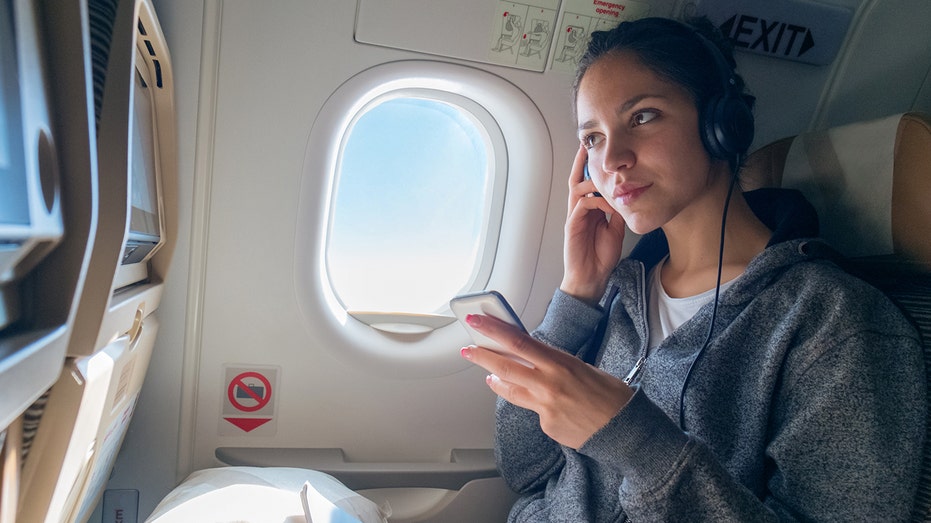- by foxnews
- 09 Mar 2025
The ‘big rip-off’: how Trump exploited his fans with ‘election defense’ fund
The ‘big rip-off’: how Trump exploited his fans with ‘election defense’ fund
- by theguardian
- 19 Jun 2022
- in news

At 8.38pm on 4 November 2020, the day after America had gone to the polls to elect its next president, Donald Trump sent out a message to hundreds of thousands of his supporters from the email address contact@victory.donaldtrump.com.
By then it was already clear that not only was victory eluding Trump, but that he was heading towards defeat. A couple of hours earlier, Associated Press had called Michigan and Wisconsin for Joe Biden, putting the Democratic candidate just six electoral college votes away from the White House.
Not that you would have known it from Trump's email.
"Friend," it began. "The Democrats are trying to STEAL the Election. I've activated the Official Election Defense Fund and I need EVERY PATRIOT, including YOU, to step up and make sure we have enough resources to PROTECT THE INTEGRITY OF OUR ELECTION."
Over the next nine weeks Trump bombarded his loyal followers with a blitzkrieg of emails, sometimes 25 in a single day. Some of the emails were specific, like the one sent on 8 November calling for help in Michigan where Trump said "we have filed a lawsuit to halt counting" (the email didn't say that a judge had already thrown out the complaint as baseless).
Some of the emails were general, pleading with Trump supporters to "defend our democracy" and prevent the "Radical Left" from "DESTROYING America". They were sent under several different names - from Trump himself, his sons Don Jr and Eric, the former speaker of the House of Representatives Newt Gingrich, the current chair of the Republican National Committee Ronna McDaniel, and then vice-president Mike Pence.
Despite the nuances, all the millions of emails sent out from the @victory.donaldtrump.com address essentially said the same thing. They exhorted Trump supporters to back the "Official Election Defense Fund" with their hard-earned dollars.
"If EVERY Patriot chips in $5, President Trump will have what it takes to DEFEND the Election and WIN!" said the email that was transmitted on 10 November - three days after Biden's victory had been sealed.
There was only one problem with this epic flurry of emails: the Official Election Defense Fund did not exist. As the House committee investigating the January 6 insurrection at the US Capitol revealed in a public hearing this week, Trump and his allies raised $250m from the emails by persuading loyal followers to donate to a chimera.
There was no fund dedicated to fighting election battles as part of Trump's mendacious and ultimately vain "big lie" that the presidency had been stolen from him. Instead, the money went into Trump's new fundraising entity Save America Pac, from where millions of dollars were distributed to pro-Trump organizations including his own hotel properties and the company that produced the Ellipse rally in Washington on January 6 just hours before the storming of the Capitol.
As Zoe Lofgren, a Democratic member of the January 6 committee, put it: "The big lie was also a big rip off."
David Becker, executive director of the non-partisan Center for Election Innovation and Research, said that the nonexistent "election defense fund" added a new layer to the January 6 investigation. On top of insurrection, sedition and an attempted coup, the American people were now learning about grift.
"We now know that Donald Trump was told repeatedly by his own family, cabinet and staff that his claims about a stolen election had no merit, and yet he continued to use those claims to raise money," Becker said.
"He was selling false claims to his supporters. The money they gave was not even being used for what he said it would be used: fighting the election in court."
Lofgren's unveiling of "the big rip-off" is not the first time Trump has been accused of playing rough and loose when it comes to cash. In his book Uncovering Trump, the former Washington Post journalist David Fahrenthold lays bare the sleight of hand the real estate developer practiced in his charitable dealings dating back to the 1980s.
During his first presidential run in 2016, Trump said he had given away "tens of millions" in charitable donations over his lifetime. Yet when Fahrenthold went looking for evidence of such benevolence, all he could find were records of $6m having been transferred to Trump's charitable arm, the Trump Foundation, since 1987.
It was also unclear where most of that $6m had gone. The only hard evidence of philanthropic giving amounted to a few thousand dollars.
One such gift, for $20,000, turned out to have been used by Trump to buy a portrait of himself to give to his wife Melania.
Fahrenthold's reporting at the Post uncovered other irregularities. Trump used more than a quarter of a million dollars from his charitable foundation to cover legal fees incurred in lawsuits relating to his profitable businesses.
The largest gift from the foundation, of $264,631, was used to repair a fountain on the grounds of the New York Plaza hotel, which Trump owned at the time.
If Trump's claims about his philanthropic largesse raised questions, so too did his use of taxpayers' money during his time in the White House. While in the presidency, he billed government departments for millions of dollars for use of his Mar-a-Lago club in Florida and other hotel properties.
Trump has also come to the rescue of those who have been accused of defrauding unsuspecting conservative Americans by making false promises to them. Steve Bannon, the former White House chief strategist, was pardoned by Trump on the last day of his presidency.
Bannon had been charged by federal prosecutors for allegedly defrauding donors after he and his co-conspirators had raised more than $25m ostensibly to build a stretch of wall along the Mexican border. All the cash raised by We Build the Wall was supposed to go towards construction, but prosecutors alleged $1m was spent on personal travel and luxury items including a Range Rover for Bannon.
Now Trump is facing his own accusations of defrauding his people. The allegation that he cheated his supporters out of millions of dollars by dangling in front of them a fictitious election defense fund could expose the former president to legal peril.
It remains unclear what impact, if any, the revelations will have on Trump's loyal army of devotees. "The January 6 committee is doing what it can to introduce these people back to reality, by showing them that Trump's claims were completely false," Becker said.
But he added: "If you've been living in a fog of lies for a long time, I imagine it's really hard to have people tell you that the sky is not polka-dotted, it's blue. And that's what we are dealing with."
The final money-begging email from the contact@victory.donaldtrump.com address was sent at 1.23pm on January 6. That was 20 minutes after Pence had gaveled in the Senate at the start of the process to certify Biden as president, and 26 minutes before a riot was officially declared at the Capitol.
After that, the "Official Election Defense Fund" vanished from Trump begging requests. But the blitzkrieg of emails has continued unabated.
This week alone, Trump supporters were assailed with a slew of fundraising appeals, each one more exotic than the last. There was the invitation to sign Trump's 76th birthday card - but only if you donated first.
Then there was the email that offered those of "My LOYAL, AMERICA FIRST Patriots" who donated at least $75 "a signed photo with their very own personalized message from yours truly". (In fact, the offer was of a photocopy of the former president grinning at the camera with a facsimile of his signature printed on it in gold ink.)
Other emails promised donors a "Trump gold card", or a seat on the "Trump advisory board". The gold card is purely figurative, and what the board does - or whether it even exists - is a moot point.
But the greatest prize of all was reserved for only the staunchest of Trump supporters. They could apply to be crowned a "Great MAGA King" or, as a separate email sent out on Friday outlined, they could join the very first roster of "Official 2022 ULTRA MAGA MEMBERS".
All at a price, of course.
- by foxnews
- descember 09, 2016
'Speaker scum' on flights sparks debate among travelers: 'This is getting out of hand'
A traveler asked social media users to weigh in on flyers who play audio aloud on their devices and don't use headphones.
read more


